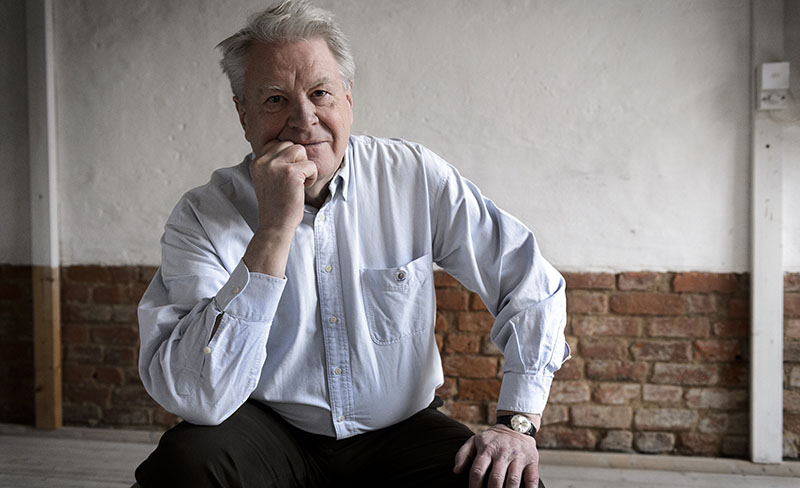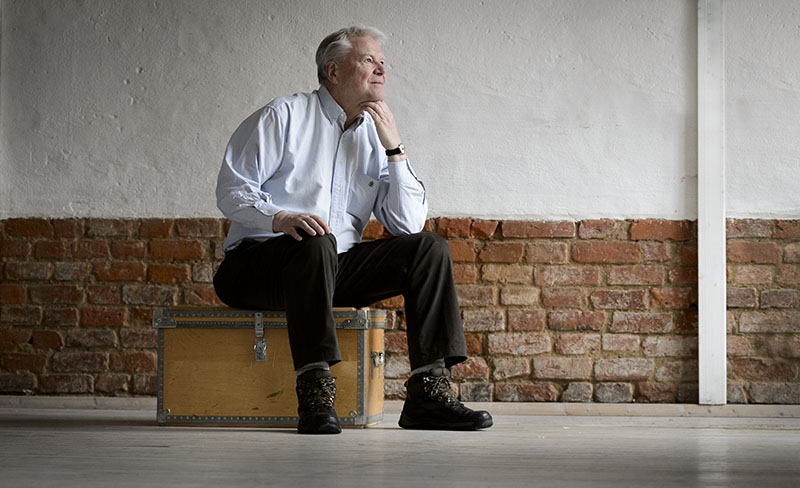Solidarity wage drops?
For a long time, trade unions have strived to even the wage gap in the labour market. New proposals, such as lower salaries for young people and those who recently arrived in Sweden, challenge this policy, while unions have become weaker. Professor in Sociology Anders Kjellberg has studied why union membership has declined and what the consequences are.
“SPIRIT OF COOPERATION” has been the key term used in Sweden for a long time when it comes to regulating the labour market and employment agreements. The spirit of cooperation – the idea that employers’ organisations and trade unions are to regulate the labour market through collective agreements – made its breakthrough in 1938 when the Swedish Employers Union (SAF) and the Swedish Trade Union Confederation (LO) entered into the so-called Saltsjöbaden agreement. In the 1950s, the employers took the initiative to introduce negotiations of central agreements – negotiations that the union saw that they could use to pursue a solidarity wage policy aimed at evening the wage gap on the labour market.
“The 50s and 60s were the golden days of the Swedish model, and in 1995 union membership was still at 85 per cent of all workers”, says Anders Kjellberg, Professor of Sociology at Lund University.
Union membership has gradually declined, and today it is at 70 per cent. However, from an international perspective, the union membership rate in Sweden of both employees and employers is high, and collective agreements are still at the centre of the Swedish labour market model.
“As long as the collective agreements have an extensive coverage, it partially compensates for the decreased organisational strength caused by declining union membership”, says Anders Kjellberg.

WHY THEN HAVE SO MANY LEFT the unions or not joined at all? The unions’ ties to the Swedish unemployment insurance associations have a lot to do with it. The major decline in membership took place in 2007 and 2008 when the government first drastically increased the monthly unemployment insurance fee, and then tied them to unemployment within each association. In these two years, union membership dropped by a total of 245 000 members, and membership in unemployment insurance associations by 462 000 members. It was mainly low-wage workers within the LO unions and LO unemployment insurance associations who could no longer afford to pay the membership fees.
“However, it’s important to distinguish between short and long-term factors. While the increased unemployment insurance fees are the main reason for both the membership drop in 2007 and the different membership developments of blue and white-collar workers, they are not the only reason. The fact that the unions have lost ground since the mid-90s can be explained by both attitudinal and structural changes”, says Anders Kjellberg and continues:
“Our society has changed and become more individualised; more market-oriented. In general it can be said that people today have a more critical and sceptical attitude towards the unions. Placing demands and wanting results is a good thing, but, at the same time, in order to enforce these demands, all employees need to come together and preferably form their own union branches”.
Structural changes that divide the workforce have led to fewer opportunities to find a strong sense of community in the workplace, to support the formation of union branches. The division is caused by the outsourcing of operations, increased privatisation of public services, increased use of staffing companies, more short-term employments, etc.
“Take the example of young people today who less often become union members. It’s not necessarily that they don’t want to join; it could also be explained by the fact that most of them only get temporary work and are perhaps not even asked if they would want to join. Furthermore, because many young people gain their first employment within small businesses without a collective agreement, such as restaurants, cafes and shops, it is entirely up to them to negotiate salaries and other terms”, says Anders Kjellberg.
THE SOLIDARITY WAGE POLICY IS NOW BEING CHALLENGED as well as the unions’ demands for contractual minimum wages. The debate includes suggestions that lower wages could be a way to create new jobs to facilitate for newcomers to enter the Swedish labour market. Anders Kjellberg has many doubts with regard to these proposals, and compares them to the experiences of subsidised youth wages:
“Economists previously argued that lower costs of employing young people would lead to more jobs, but studies show that not that many more jobs were created. Other economists have shown that the lowering of payroll taxes for employing young people has cost the government over SEK 1 million per year for each new job”.
Anders Kjellberg also finds it strange that the discussion on how lower wages leads to more jobs only includes the groups that are already worst off in terms of salary, such as employees working in the hotel and restaurant, cleaning and retail industries. Reduced wages in these areas could become insufficient to live on, and needing to be supplemented through more work or welfare. It could create a situation similar to the US that has a large group of working poor.
“The discussion on lowering wages never includes relatively low-paid shortage occupations in professional groups such as nurses, teachers, librarians and social workers; rather, here the call is for attractive salaries”, says Anders Kjellberg. “It would be really strange if we were now to increase the wage gap and have different terms for different groups – is this something we accept?”, he says.
Text: Pia Romare
Photo: Kennet Ruona
Facts
-
The Swedish model
-
In Sweden, the labour market is regulated based on a consensus (agreement) between employer and employee organisations, not by the government stepping in. Therefore, Sweden – unlike many other countries – does not have a law on a minimum wage, for instance.
The idea of a collective agreement had its first breakthrough through the so-called Workshop agreement of 1905 and December compromise of 1906 between LO and SAF. However, until the 1930s the labour market remained coloured by a high level of conflict. The spirit of cooperation had its big break in 1938 when – facing threats of legislation to create socio-economically sustainable wage increases and less conflict – LO and SAF entered into the Saltsjöbaden agreement.
-
Collective agreements
-
In Sweden there is generally an agreement for each sector and group of workers on the labour market. The agreements regulate wages, and for employees this usually includes many benefits, such as extra holiday pay, additional paternity leave, and above all service (or occupational) pension. For today’s young people, a collective agreement is more important than ever, and that employers thereby pay towards their future service pension. Service pensions are becoming increasingly important as the state pension is watered down and on a constant decline.
Today, nine out of ten employees are covered by collective agreements. Although the percentage is still high, however, the number of employees who are excluded from collective agreements has increased to nearly half a million people.
-
What is the union’s role?
-
A strong union means a continued opportunity to reach central agreements with employer organisations. Today, many of the decisions about the specific content of the collective agreements – in terms of wages etc. – are now made locally. Local trade unions are therefore important to safeguard the members’ interests both in terms of salary and work environment issues. Local unions can in this regard receive support from the central organisations.
A strong union is also needed to ensure that as many workplaces and employees as possible are covered by collective agreements.




